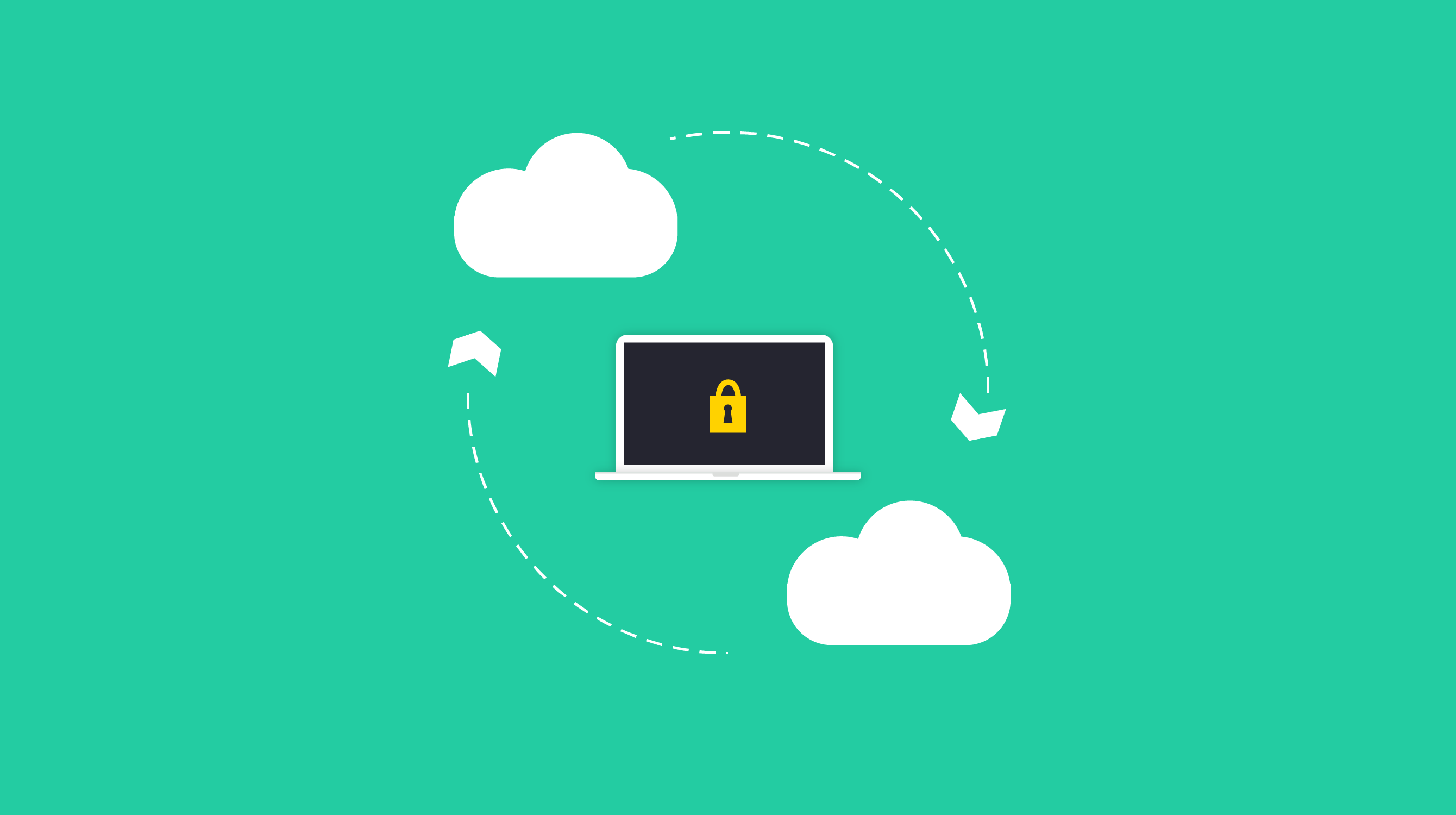May 14, 2024
 by Alexa Drake / May 14, 2024
by Alexa Drake / May 14, 2024

If you’re working hard to protect and save your data, you want to make sure you’re employing the right method.
When you use cloud data security software or back up your data, no matter if it’s personal or professional, you’re already taking the first step to guard yourself against hackers, viruses, and natural disasters.
Major companies accumulate data at exponential rates and have to expand their backup process every year to hold more and more of it. On top of all the data that needs to be backed up yearly, it can be difficult to find a system that runs smoothly no matter how much data it stores.
To make matters worse, daily, weekly, or monthly backups will continually get slower until the current process doesn’t work and someone has to reassess everything.
No one should have to constantly worry about their data backup. If you go long enough without tweaking your process, you could be facing an avoidable problem.
The question is: what can you do to implement a stress-free data backup system?
Continuous data protection (CDP) is a backup solution that works in real-time to automatically update every single change to your live data. By running this type of backup, you keep a constantly up-to-date copy of your information and can achieve powerful disaster protection.
Continuous data protection is an attractive backup method to use because it’s cost-effective, has little influence on disk or server performance, and offers strong protection against data loss events. It provides added data security much like data exporting does and ensures data availability and access during the conversion of information.
Continuous data protection (also known as continuous backup) shares a few similarities with traditional backup. Both methods take a full computer snapshot that records all of the data held within. But this is where the similarities end.
Continuous data protection backs up all data on a computer every single time a change is made. This means that by implementing this method, you’ll be able to keep a continuous record of the changes made to any file, document, folder, or spreadsheet – and have the ability to restore a computer to any point in time with incredible granularity. All backups are replicated repeatedly and are saved to a journal file along with the corresponding changes made.
Many people searching for a backup solution gravitate toward continuous data protection because it solves the frustrating “backup window” dilemma. Running a traditional backup puts you at the risk of losing data between two scheduled backups. This is where continuous data protection shines. By employing this method, you’ll almost never lose your data because, well, it’s continually being backed up.
Because backups happen every few minutes rather than nightly, CDP diminishes the amount of data that must be backed up each time and will practically get rid of the ‘backup window’.
Continuous data protection software also offers you strong protection against malware, viruses, and ransomware, as well as accidental data deletion or sabotage.
You may be wondering how continuous data protection works. Let’s first look at its background.
When the method was first introduced, it was used to avoid the common problem of shrinking backup windows. Before continuous data protection was invented, many companies would run a nightly tape backup – but there was a problem.
These companies found that they had to protect a continuously growing data set within a specific backup window, and although there are various ways to speed up tape backups, there was still a limit to how much data you could backup within a set period of time.
Continuous data protection software was introduced to address this problem specifically. CDP works by copying the “delta” (any changes made to your data) from the computer being backed up to the disk or drive it’s being saved to. This is the initial data copy. Continuous data protection will record every single write and store it in a changelog on the CDP system.
Note: A changelog is a record or “log” of all substantial changes made to a computer.
Because continuous data protection runs in the background, it can recognize any changes made to your data. Once the software discovers these changes, they will immediately be backed up to the master backup file.

Source: Datacore
CDP keeps track of every single change until the last write before failure which will allow you to restore your computer to that point of any previous point prior to the data loss or corruption. So even if data is lost, you’ll still be able to restore it. This is because CDP software takes multiple snapshots of each file on different dates so they can be restored to any previous save.
If you’re researching different backup methods and trying to find the one that will work best for you, why not take a look at a list of the most highly-rated software on the market? If you’re on the hunt for backup software, check out G2’s unbiased user reviews right here.
Continuous data protection software can record the changes made to a myriad of different data types such as:
The process of backing up with CDP is similar to traditional backup. You'll choose which files, folders, and applications you want to include in your CDP backup and schedule how often you want backup intervals to run.
Continuous data protection is a powerful backup method that works hard to save your data from harm. There are multiple reasons why singular users and large organizations both use this backup method.
| PROS | CONS |
| Virtually no data loss | Can be single point of failure |
| Can restore data from any date | Hefty spend on disk storage |
| Uses much less disk space | Higher load on data resources |
| Saves data in quick intervals | Can cause performance issues |
You have a constant stream of data syncing which means data will never be lost (even if the system fails). If your system crashes, you won’t have to spend your time fixing the issue yourself. You’ll be able to recover your data immediately without missing a beat.
Additionally, continuous data protection offers shorter gaps of time between backups. If a disaster occurs, you’ll only have to roll back a few minutes to an hour, as opposed to a couple of days, to recover your data.
CDP records multiple versions of each file that go all the way back to the initial changes. Users will be able to restore information to any date in time. This is especially important when collaboration is underway. You won’t accidentally delete or damage a file that another user is working on.
With CDP, the system will only need to read the changed parts of your data instead of sifting through all of the data each time you run a backup. Because of this, your server’s performance won’t be slowed, and you won’t be forced to run nightly backups. CDP will back up every few minutes for you.
You’ll be saving disk space by using continuous data protection. If you need a snapshot of how your server looks every hour for the last two days, every Wednesday of the last week, and every week of the last month, CDP has you covered.
How are you saving disk space? Continuous data protection solutions will only keep the bare minimum amount of data that is needed to represent different points in time. Only around 15% of the storage space is being used. And because a full backup is only run one time, the continuous data protection backup is, in theory, recycling your data again and again without eating up your disk storage space.
CDP uses journal-based recovery which continuously records all of the changes made to data and applications. This is useful when recovering data. Because the changes are constantly being written to the datastore, continuous data protection allows you to access data from any point in time.
Because you can access data from any point in time, CDP protects you if you’re the target of a malicious attack. You can roll back your data to just before the attack and find your data intact.
Continuous data protection software plays a big role in disaster recovery. This is because the CDP backup store can be duplicated time and time again to an offsite data storage center, protecting the data from physical harm.
Disaster recovery (DR) solutions help businesses quickly and efficiently recover software, settings, and data to an as-before state in the event of a computer, server, or other infrastructure failure. Check out the highest-rated disaster recovery software and find one that works for you.
Though there are many reasons why continuous data protection is a worthwhile backup method, there are a few drawbacks you may face when using it.
Because a continuous data protection server may be the only method you use to save your data, it can turn into a very fragile thing. Your CDP server can quickly become your organization’s single point of failure. If something happens to the save, your data is at risk.
Because continuous data protection demands fast and efficient disk drives, you may find yourself budgeting a hefty amount of money in physical disk storage.
CDP increases the load on data resources. Although a benefit of CDP was the save on disk space because each data transaction has to be saved to the backup immediately, it practically doubles your data throughout. Your important resources are already loaded which can cause performance issues.
Continuous data protection is a pretty enticing backup option when it comes to cybersecurity, especially for large organizations that have a seemingly endless amount of data to protect.
With CDP, you can recover data from your disk/drive that is as up-to-date as possible. And because you avoid the backup window dilemma with this method, CDP gives you the option to stop backing up data in one large chunk overnight and instead run it every few minutes.
This sounds too good to be true. Can CDP replace traditional backup completely?
The answer is yes, but there’s a catch. The safety of any backup relies on the location of that data. If you’re backing up your data to a site in the same location as your business, or close to it, you may not be fully protected, even with CDP.
If there’s a disaster like a fire, flood, or earthquake, your data could be susceptible to damage. To truly achieve protection from the elements, you’ll need to move a copy of your data to an offsite location, either by network or removable media.
This goes for the majority of backup methods. It’s a good rule of thumb to follow the “3 in 1 backup” rule. This is where you store your data in three places, on two types of storage, and with one copy kept off-site. If one copy is damaged, you’ll still have two copies to restore from.
CDP offers the most comprehensive data protection for any company and uses journal-based technology to constantly track the changes being made to any backed-up data. This allows anyone to recover data from any point-in-time, as far as weeks back to as recent as a couple of seconds.
On the other hand, snapshot-based technologies have to be scheduled which will result in recovery intervals becoming hourly rather than every couple of seconds.
The main difference between continuous data protection and snapshot-based technologies is the amount of storage space each requires. Snapshot technology requires a large overhead of storage space, typically needing 20-30% of your disk’s space. In contrast, CDP will only take about 15% of disk space, saving you space and money.
Many users and organizations gravitate toward continuous data protection and continuous backup software because of this reason. More often than not, companies are looking for a continuous backup software method that offers them to the second recovery. Because CDP records data every couple of seconds, it reduces data loss to seconds and drastically minimizes the change of disruptions to your workflow.
Although these two methods look almost identical to the eye, there is a difference between them. Both continuous data protection and near-continuous data protection offer instant data recovery. You can roll back an hour and access your data in an instant if something happens to the original copy.
The difference between them comes with what their recovery point objective (RPO) offers.
Note: The RPO is the amount of data you can afford to lose before it impacts business operations.
Continuous data protection offers you a recovery point objective of 0 while near-continuous offers a recovery point objective that aligns with how often you are having the backup process take a snapshot. This is usually every hour.
There are a few key differences between continuous data protection and mirror backup. To start, a mirror backup is an exact copy of the selected folders and files from the source being backed up. This type will replicate data from your computer to a separate offsite disk or server so that if one happens to be damaged, you can recover data from the mirrored copy.
Up until the introduction of cloud storage, storage message blocks (SMBs) were mainly using a singular server and maybe a few laptops. They hadn’t bothered implementing continuous data protection because at the time it was too complex and cost too much.
Continuous data protection is a very popular feature for large and scaling organizations. Some professionals might even classify it as a must-have when it comes to protecting their company’s sensitive data.
The more data a business accumulates over the years, the more a continuous data protection backup makes sense. With low storage space and the ability to recover data from minutes, hours, days, and weeks ago, CDP is a great option for anyone looking for airtight security that doesn’t eat up disk space.
It’s a no-brainer that data security should be an integral part of any business. Security software comes in all shapes and sizes, all designed to secure all types of data no matter the size.
Browse the highest-rated data security software to find and implement a tool that keeps your data protected.
This article was originally published in 2020. It has been updated with new information.
Alexa is a former content associate at G2. Born and raised in Chicago, she went to Columbia College Chicago and entered the world of all things event marketing and social media. In her free time, she likes being outside with her dog, creating playlists, and dabbling in Illustrator. (she/her/hers)
What if your computer crashed tomorrow?
 by Alexa Drake
by Alexa Drake
Data loss, no matter the cause, is a threat to organizations. The 3-2-1 backup strategy helps...
 by Praveen E
by Praveen E
Don’t cry over spilled milk, right?
 by Claire Brenner
by Claire Brenner
What if your computer crashed tomorrow?
 by Alexa Drake
by Alexa Drake
Data loss, no matter the cause, is a threat to organizations. The 3-2-1 backup strategy helps...
 by Praveen E
by Praveen E


